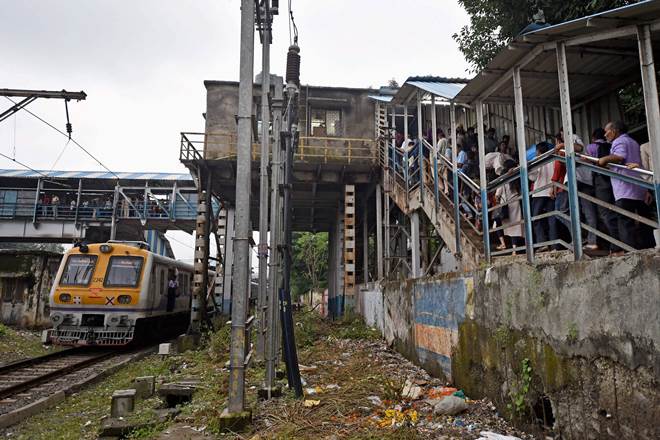More than a month after the Elphinstone Road stampede, and reportedly the Western Railway still to award contracts to build new bridges at Elphinstone Road and two other locations in order to augment their discharge capacities, the Indian Army has been asked to step in and provide the Railways a helping hand. While the existing Dadar-end bridge at Parel station would be extended towards the India Bulls exit, an entirely new bridge is proposed at Currey Road. A new bridge at Ambivli would also come up at the Igatpuri end with landings on east and west side, accessing both the platforms.
The Army expects to complete the given task by January 2018, less than two months away, by deploying one of the most valuable resources of World War II—the ‘Bailey bridge’ that can carry a 60-tonne battle tank. This portable prefabricated truss-type bridge was developed by British Army engineers during WW II for quickly bridging any gaps that the retreating German army could create by blowing up the existing ones. With a unique advantage of requiring no special tools or heavy equipment to assemble, the wood and steel bridge elements are small and light enough to be carried on trucks and lifted into place manually without requiring the use of a crane.
The brainchild of Donald Bailey, a civil servant in the British War Office who had been tinkering with models of bridges, when the army brass was impressed enough to ask the Royal Engineers to develop a working model at the Military Experimental Engineering Establishment in Dorset, UK. Several formats were developed, such as ‘suspension’, ‘stepped arch’ and the ‘flat truss’ bridge which ultimately became the standard. The core strength of the Bailey bridge is its simplicity of design, fabrication and assembly of its modular components. Combined with the ability to erect and deploy sections with minimum assistance from cranes or any such other heavy equipment, it emerged as one of the most vital pieces of equipment in the Royal Engineers’ arsenal.
Consisting of three main parts, strength is provided by the panels on the sides. which are 3-metre long and 1.5-metre high cross-braced rectangles weighing 260 kg, and can be lifted by six men. Its modular design allows engineers to build each bridge to be as long and as strong as needed, doubling or tripling up on the supportive side panels, or on roadbed sections. Consisting of welded structural steel sections, the top and bottom chord of each panel have interlocking male and female lugs into which pins could inset. Over the years, many such structures have been built by the Indian Army. During the Kumbh Mela, they provided more than one passage for the pilgrims to cross the mighty Ganges to avoid stampedes. Meant as a temporary measure, they have become a permanent fixture at many places.
However, the Mumbai talk will be not be a cakewalk, since the bridge at locations crossing rail tracks will have to be at a height of more than 8-metres to clear the catenary wires of 25-KV electrified section. It will not be a simple case of ‘bridging the gap’ either, as the Army Engineers would have to assemble not only the support columns at each end and intermediate locations, but also provide staircase—the whole works.
While assembly of sections could be done on the ground, they would have to be lifted in position by heavy-duty cranes. For each such operation, a ‘traffic block’ by the Railways’ control room would have to be provided for a specific period, only during night hours when trains are not normally scheduled to run. However, given the Army Engineers’ expertise for advance planning in the minutest details to meet any eventuality, Mumbaikars can expect the additional bridges in place by the new year. The mega inputs relieving congestion at these stations with high footfalls, and the recent order by the Mumbai High court to keep street hawkers 150-metres away from such facilities, if implemented in letter and spirit by the BMC, could bring immense relief to Mumbai’s harried commuters.

